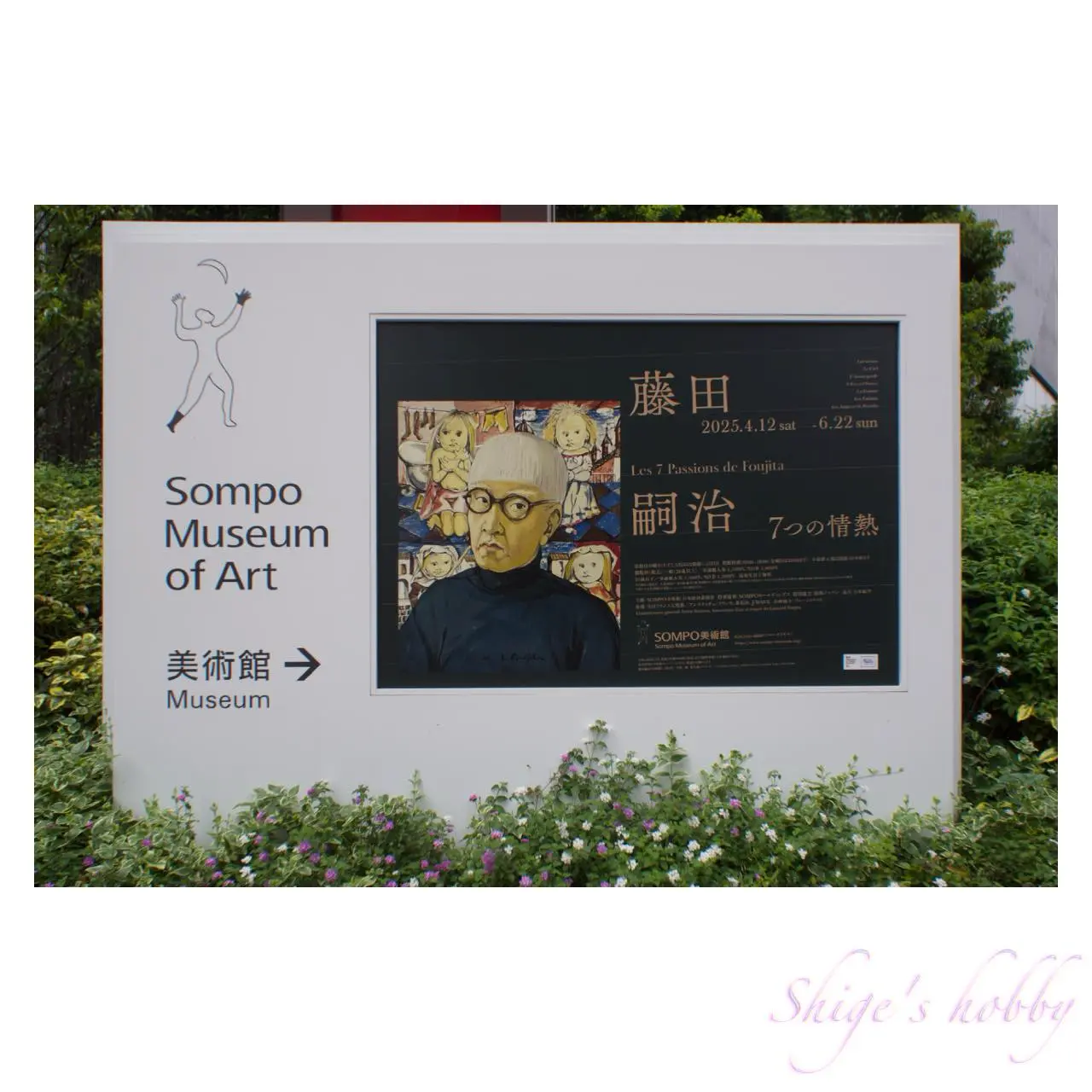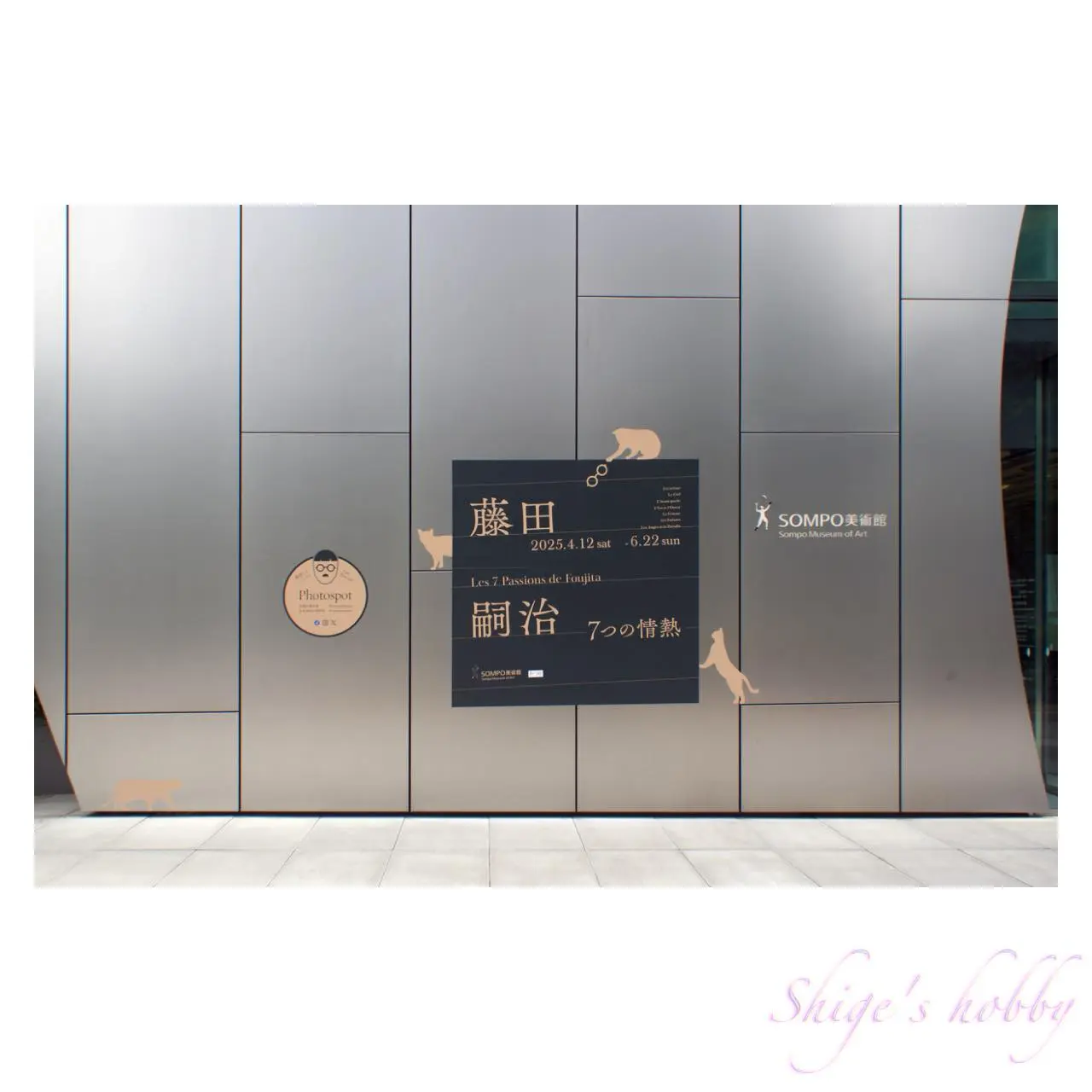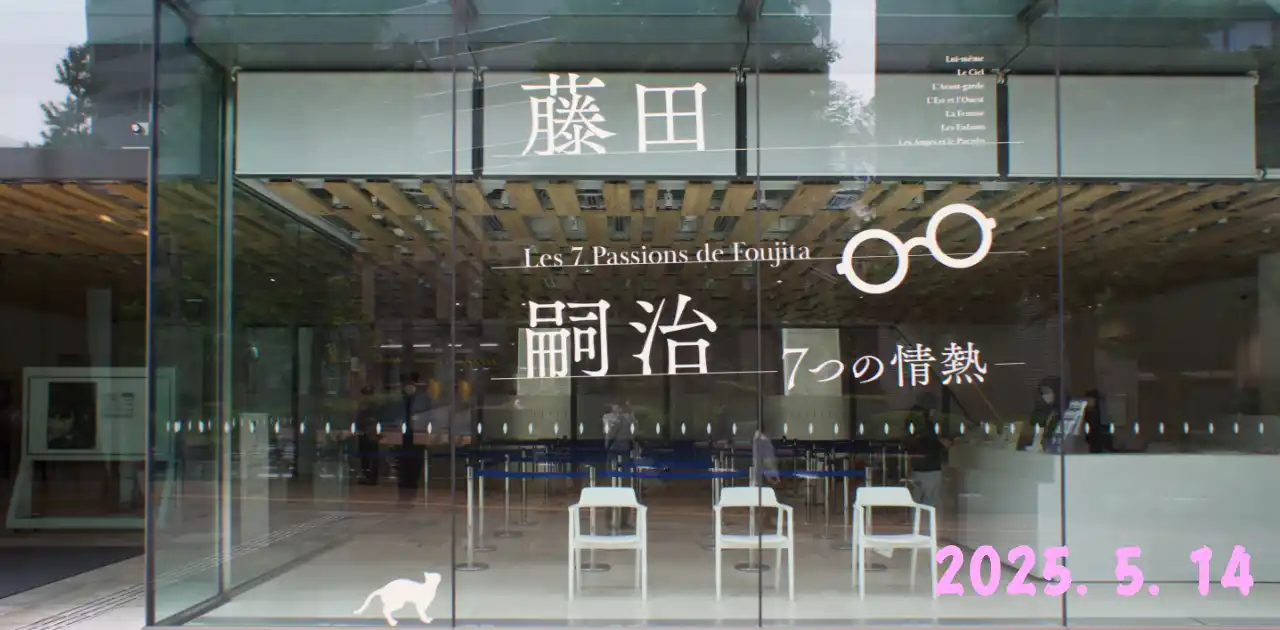Last updated on 2025-08-19
“Gaze and 23 Cats”
A review of the “Tsuguharu Foujita: Seven Passions” exhibition held at the Sompo Museum of Art at the Shinjuku East Exit of Tokyo.
Table of contents
- Please see the disclaimer regarding advertising here.
- Italicized links in the text are advertisement links that take you to other sites.
Tsuguharu Foujita: Seven Passions – Sompo Museum of Art
Overview
- Exhibition title: Tsuguharu Foujita: Seven Passions
- Dates: Saturday, April 12, 2025 – Sunday, June 22, 2025
- Location: Sompo Museum of Art
- Others: Tickets are on sale at Asoview for the general public at 1,700 yen (same price as the advance purchase price), a 100 yen discount.
- Traveling Exhibition
- 2025.2.1-3.30 Paramita Museum
- 2025.4.12-6.22 Sompo Museum of Art
- 2025.6.29-9.15 Kobe City Koiso Memorial Museum of Art
- 2025.10.3-11.9 Kagoshima City Museum of Art
- 2026.1.24-3.29 Fukuyama Museum of Art
The exhibition is composed of 7 chapters, and according to the distribution list, there are 134 pieces on display, of which no. 33, 50, 86, 89, 93, 127, S-11, S-17, S-21, S-22, S-24, S-27, S-30, S-31, S-33, and S-35 were not exhibited at the Tokyo exhibition. There are also works that are not exhibited at other traveling exhibitions depending on the location.
The exhibition is composed of works from Japan, France, Belgium, and Israel.
- Chapter 1: Passion for self-expression
- Chapter 2: Passion for landscapes
- Chapter 3: Passion for the avant-garde
- Chapter 4: Passion for the East and the West
- Chapter 5: Passion for women
- Chapter 6: Passion for children
- Chapter 7: Passion for heaven and angels
The exhibition floors start on the 5th floor and continue on the 4th floor, displaying Foujita’s works on two floors.
The 3rd floor is titled “Part 2: The Origin and Future of Passion – Japanese Artists Surrounding Foujita” and displays works by artists who were in contact with Foujita, including Kawashima Riichiro, Bando Toshio, Koyanagi Tadashi, Togo Seiji, Oka Shikanosuke, Takano Sanzo, Takasaki Tsuyoshi, Ebihara Kinosuke, and Tabuchi Yasukazu.
Photography is not permitted inside the museum, and you can only take photos of Van Gogh’s Sunflowers near the exit and Togo Seiji’s Window, which is in the museum’s collection.
Goods such as catalogs are sold in the shop on the 2nd floor.
The ticket office is on the 1st floor, and on Saturdays and Sundays, when there is a line to buy tickets, you can avoid the line by purchasing a smartphone ticket from Asoview. The Asoview site search function on smartphones is difficult to use, which is a bit discouraging. When entering the museum using your smartphone ticket, you can get a paper ticket stub by asking for a paper ticket stub at the ticket confirmation desk. Recently, many places no longer provide paper ticket stubs, so I’m a little happy to see that there are museums that still have paper ticket stubs.
Report
I went to view the exhibits because there were many from private collections. This time, I focused on “Gaze and Cats.”
Chapter 1: Passion for Self-Expression
Self-portraits from various eras are on display.
Fujita’s eye fetish and love of himself coexist in “Self-Portrait in Yuki’s Eyes,” which is interesting.
The oil paintings “White Cat” and “Tiger Cat” feature cats, and the rest have cats in their self-portraits. There are four cats in four works.
Chapter 2: Passion for Landscapes
Fujita’s landscape paintings are selected from various eras and on display. The early work “Kite Flying, Paris” features a pitch-black person flying a pitch-black kite, which is surreal and interesting.
There is one cat in “Good Night, Girl with Cat in the Snow.” This is also a classic combination of a sharp-eyed girl and a cat, which Fujita draws.
Chapter 3: Passion for the Avant-Garde
Although the number of pieces is small, from works in a private collection in France, we can see how Foujita became interested in and worked on Cubism. This chapter does not include cats.
Chapter 4: Passion for the East and West
This is a collection of works from the period when he was searching for his style of painting at around age 31. This chapter is also made up entirely of works from private collections.
This was a time when the shape of the eyes was unique, and while the official website says that they were “almond-shaped eyes like those of a Buddha statue,” I think that this might be the case, but I feel like I have seen similar eyes elsewhere, but I can’t remember what they are. This chapter does not include cats.
Chapter 5: Passion for Women
Here, you can see Foujita’s unique milky white works. “Portrait of Mrs. Y,” owned by Sumitomo Mitsui Banking Corporation, is a portrait with four cats, a style that is not often seen in portraits. I have seen this work several times, but the contrast between the cool lady and the cat is excellent no matter how many times I see it. There are seven cats in three works, including the four in “Portrait of Mrs. Y”.
Chapter 6: Passion for Children
This is the children’s series that the Pola Museum of Art is actively collecting, and there are five works of cats and children lined up, and you can feel the greatness of Fujita’s depiction of girls and cats. Here, there is one cat in each work, and 11 cats in 11 works.
The gaze of “Girl in a Three-Button Dress” was the most interesting gaze in this exhibition.
Chapter 7: Passion for Heaven and Angels
This exhibit features many Christian-related works painted in his later years in the same style as the room modeled after a church at the Ando Museum of Art in Karuizawa.
Matsuoka Museum of Art’s “Nativity” has come on a business trip from Shirokane. It is usually exhibited in a low-ceilinged exhibition room, so it is refreshing to see the work in a different space. This work was not exhibited at the Paramita Museum in Mie Prefecture. The other venues were Kobe, Kagoshima, and Hiroshima, so it appears to be only exhibited in Tokyo. The Matsuoka Museum of Art would probably want to avoid long-distance travel as well.
I looked for cats and Foujita himself in Heaven and Hell and The Four Horsemen of the Apocalypse, so I tried to find them. I couldn’t find Foujita, but I did find some cat-like beasts. They looked cat-like, so I didn’t count them, so that’s 0.
Summary
The chapters are divided by theme, and within each chapter the works are from different eras, allowing for a wide variety of works to be seen.
Including posters and prints, Foujita left behind a huge body of work, so there were many things I’d seen somewhere before.
The key point may be that there are so many works that it’s easy to forget whether you’ve seen them before or not.
It’s also good that related artists are grouped together on the third floor, as this makes it easier to appreciate. It would be fine if the exhibition was necessary and the works were mixed together, but it can be difficult to see when other artists are simply mixed in to fill in the gaps.
Gallery


Reference links
- Tsuguharu Foujita: Seven Passions – Sompo Museum of Art・Official page
- Art Exhibition Navigator – [Preview] “Tsuguharu Foujita – Seven Passions” opens at the Sompo Museum of Art from April 12th
- Tsuguharu Foujita: Seven Passions (SOMPO Museum of Art)・Online Tickets
Update history
- 2025.5.15
Photo equipment
- LEICA T +ELAMRIT R 24mm +BAVEYE
- SONY NEX-7 +Ms-Optics APORIA 24mm
Affiliate links
- Please see the disclaimer regarding advertising here.
- Italicized links in the text are advertisement links that take you to other sites.
- SOMPO Museum of Art・Ads by Amazon
- SOMPO Museum of Art・Ads by Rakuten
- Tsuguharu Fujita・Ads by Amazon
- Tsuguharu Fujita・Ads by Rakuten


Be First to Comment